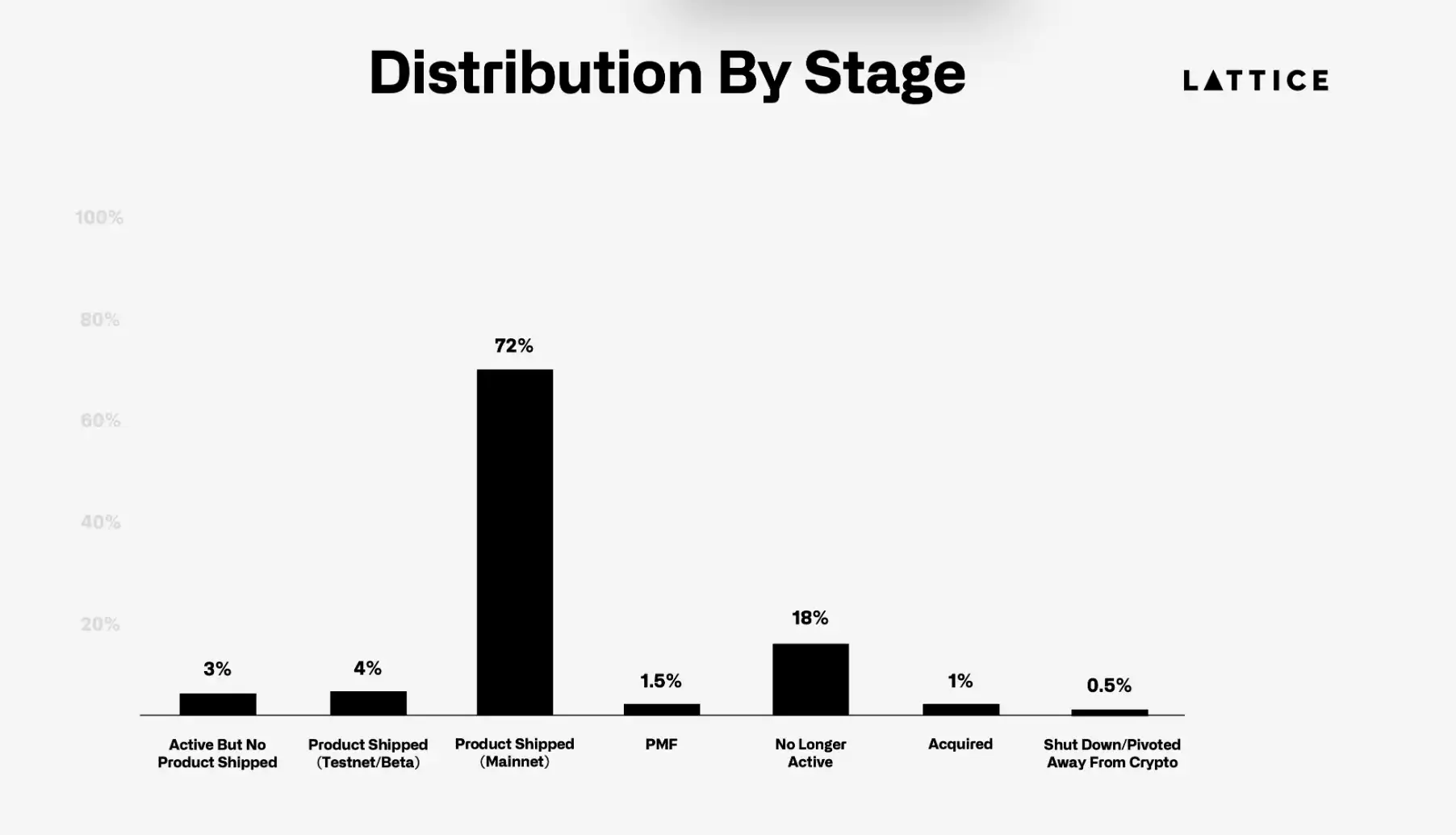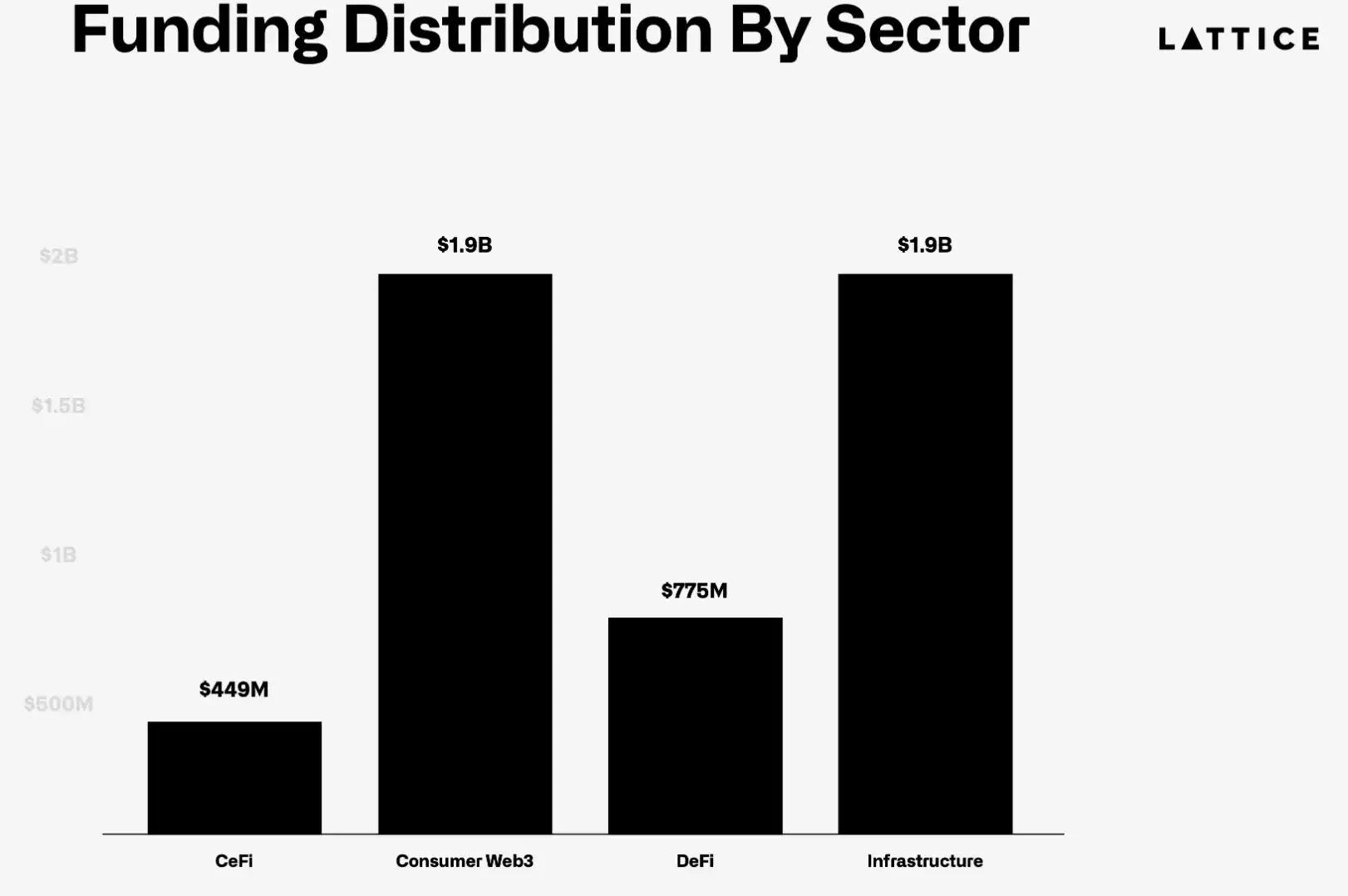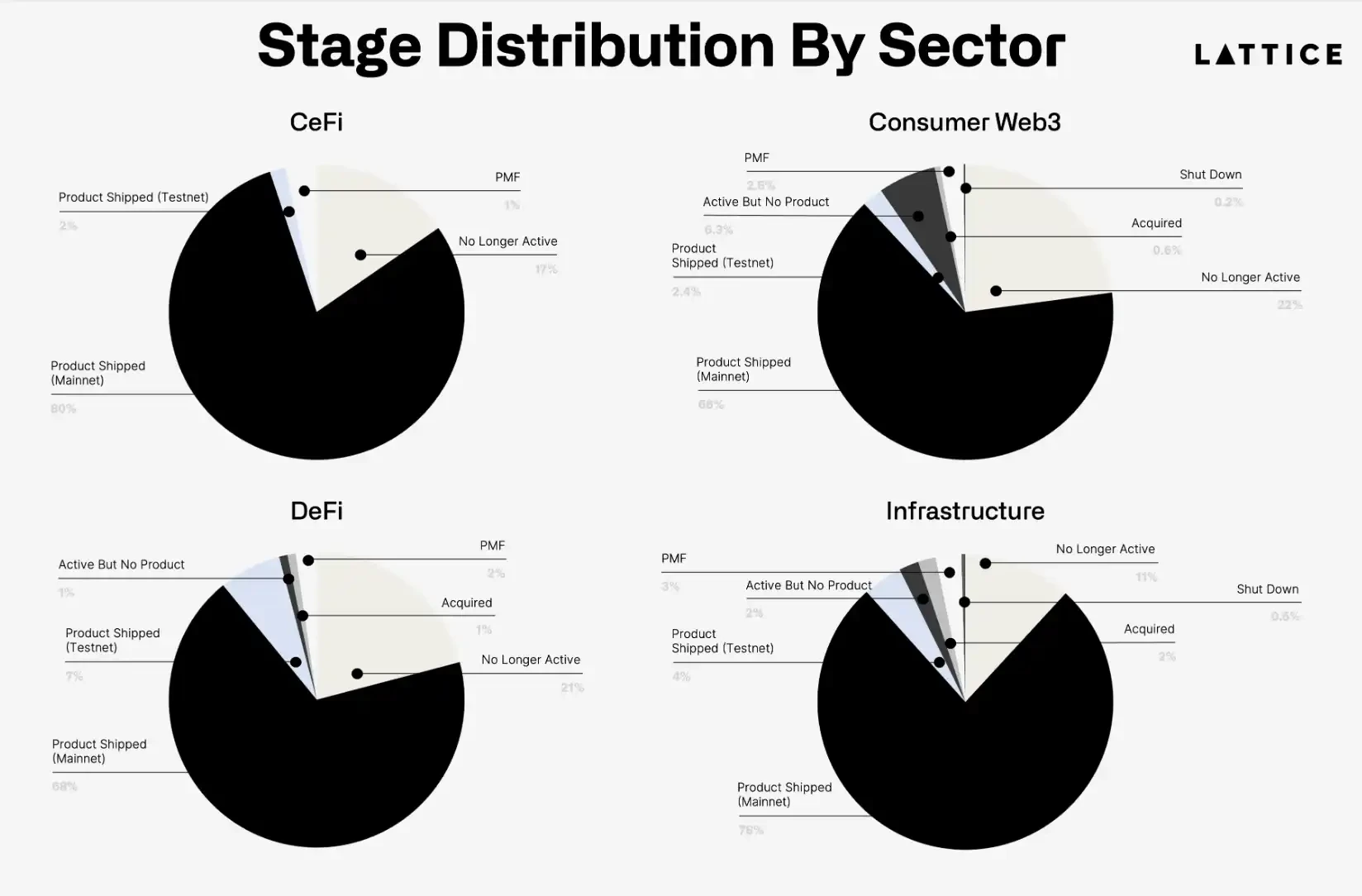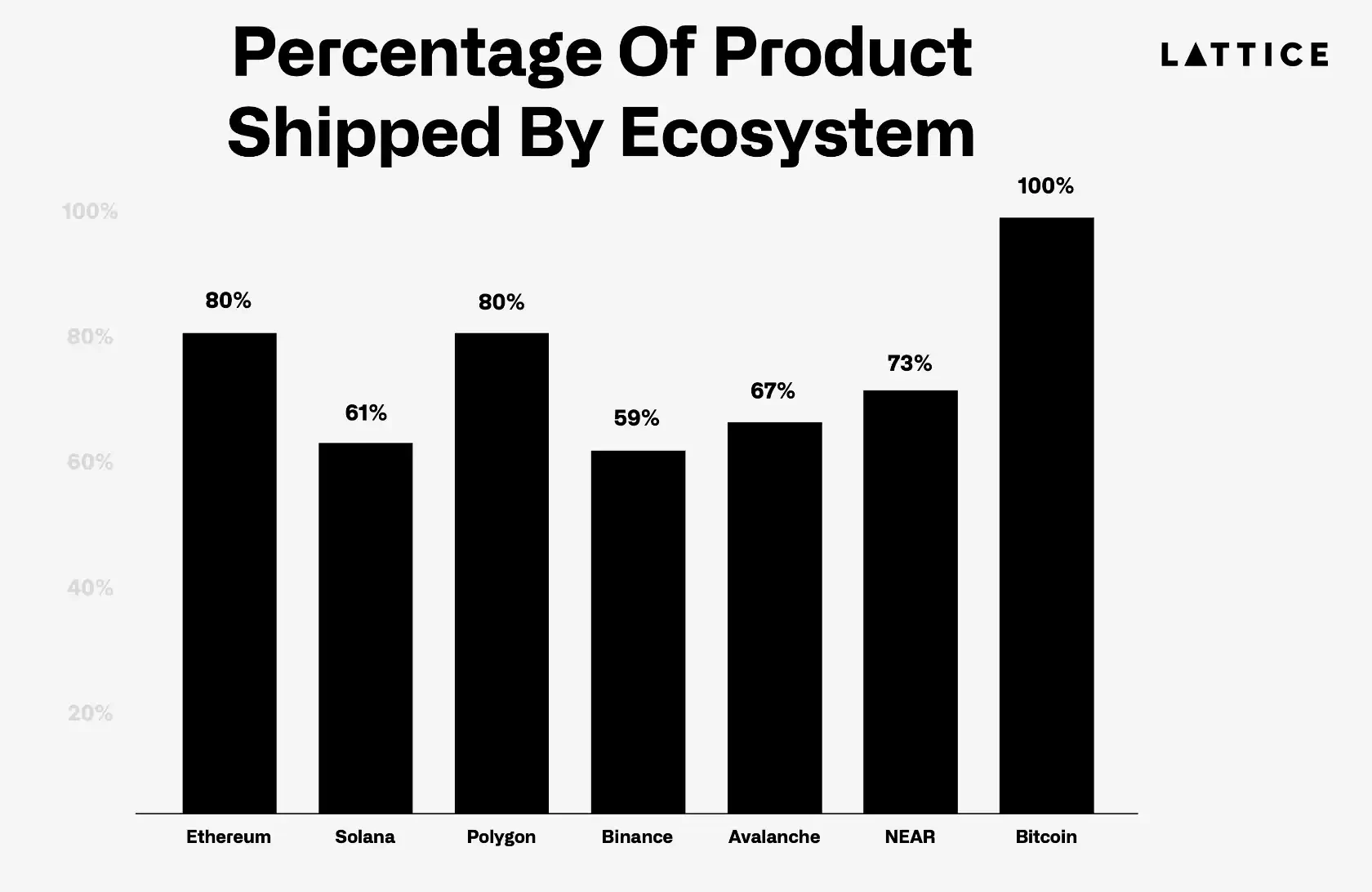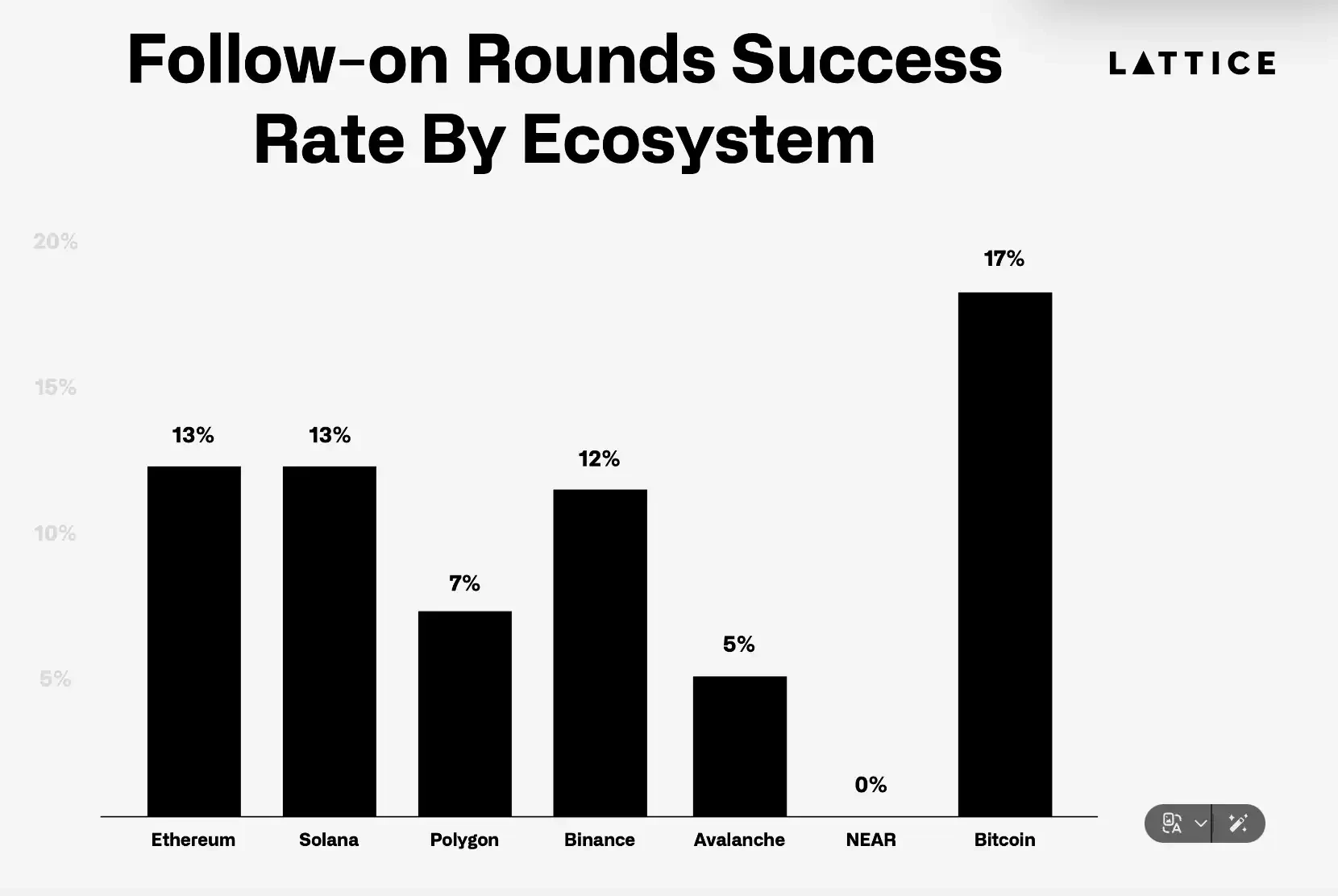ما هو الوضع الحالي لـ 1200 مشروع تشفير حصلت على تمويل أولي قبل عامين؟
Original title: 2022 Seed Stage Retrospective
Original source: Lattice Fund
الترجمة الأصلية: TechFlow
يقدم
Last year, we published our 2021 Seed Stage Review to provide a clear picture of trends at the seed stage that year. How many companies shipped to mainnet? How many found product-market fit? Who launched a token?
With the 2024 report, we now turn our focus to 2022 to better understand progress and trends in the seed stage of cryptocurrency. The report analyzes over 1,200 public cryptocurrency pre-seed and seed rounds from 2022, providing insights into industry-wide, sector-specific, and ecosystem-level trends. As with our previous reports, we are open sourcing our database to allow for further exploration and analysis. We invite your feedback and welcome any corrections; please feel free to contact us at hi@lattice.fund.
Executive Summary
Projects in the Class of 2022 received funding during one of the most prosperous periods in cryptocurrency history. Teams announcing raises this year likely benefited from the bull run in 2021 and early 2022. Given the frothiness of the market, we expected these metrics to be negatively impacted compared to teams that raised funds during the bear market. Our analysis confirmed these expectations, but there were also positive takeaways.
Nearly 1,200 companies have received a total of $5 billion in investment since 2022, a 2.5-fold increase from the previous year. Here are the main highlights:
Breakthrough in 2022
-
Any year has its share of big success stories, and 2022 is no exception.
-
On the infrastructure side, we saw re-collateralization protocol Eigenlayer, wallet-as-a-service provider Privy, and parallel EVM Sei all raise seed rounds. It’s worth noting that each of these teams helped kick-start a broader narrative.
-
In the DeFi space, the breakout stories of 2022 are Perp Dex like Vertex and Apex, and professional NFT exchange Blur.
-
Gaming was the leading consumer segment with nearly $700 million invested. Despite the large amounts of money invested, the two biggest success stories raised relatively small amounts of money. Pixels and PlayEmber each raised less than $3 million in seed rounds.
Launching in a Challenging سوق
-
Despite the bear market, nearly three-quarters of projects have successfully launched products on the mainnet. Product-market fit (PMF) and follow-on financing have become more challenging compared to 2021, with both falling significantly year-on-year.
-
18% of groups have closed or stopped development, up from 13% in 2021.
-
Only 12% of teams received follow-up venture capital, a significant drop from 50% in 2021.
-
Only 15% of projects have launched a token, down from 50% in 2021.
Renewed focus on infrastructure and CeFi
-
After a detour in 2021, investors returned to more proven and consistent areas such as infrastructure and CeFi, pouring nearly $2 billion and nearly $450 million into these sectors, respectively, a 3x and 2x increase over 2021 figures.
-
80% of CeFi projects and 78% of infrastructure projects have been launched on the mainnet, reflecting investors strong confidence in these areas.
-
Results at the application layer are more complex, with 66% of consumer Web3 products and 68% of DeFi teams delivering products to the mainnet.
-
Consumer teams were more likely to cease operations, shutting down at nearly twice the rate of infrastructure teams.
-
Payment (86%) and wallet (90%) projects are most likely to launch on mainnet.
Ethereum leads, Bitcoin continues
-
Ethereum remains the dominant layer-one ecosystem in terms of fundraising, while Bitcoin projects continue to demonstrate resilience.
-
$1.4 billion was invested in Ethereum-based projects, followed by nearly $350 million in Solana-based projects.
-
Fundraising in the Polkadot ecosystem has dropped significantly, down 40% year-over-year.
-
Teams building on Solana and Ethereum are also likely to receive follow-on funding.
-
In contrast, no team in the NEAR ecosystem has been able to raise follow-on funding.
-
Projects in the Binance ecosystem were the least likely to remain active, with a third of teams ceasing operations. Solana’s failure rate also doubled from 2021 to 26%.
-
The Bitcoin project continues to exist, with 100% of the team still active two years later.
Methodology
The report is based on a combination of first-party data, supplemented by insights from Messari, Root Data, Crunchbase, and other sources. To assess the progress of the seed-stage market, we categorized each company by stage, including active but not delivering and no longer active, with additional breakdowns by ecosystem and industry. While we have made every effort to ensure data accuracy, we acknowledge that errors may occur due to reliance on third-party data. Among ecosystems, we only included in the chart those with more than 15 teams that were able to raise a first round of financing.
One of the most challenging aspects of this analysis is determining whether a project has achieved product-market fit (PMF). Unlike the objective milestone of product delivery, PMF is often subjective and can be fleeting, especially in the rapidly changing crypto market. We combine on-chain data from analytics providers such as Dune Analytics and DeFiLlama with information from company websites and blogs to make these determinations.
(Note: Lattices illustration divides the analyzed products into several stages from left to right: active but not delivered, product delivered, with PMF, with tokens, no longer active, acquired, and shut down)
Seed round project status
Our seed-stage review began as an internal analysis to identify projects that were gaining traction but had not yet raised follow-on funding, which could be targets for Lattice. However, it turned out that the data was interesting enough to share with the wider industry.
This research is valuable because it reveals the health of individual sectors, ecosystems, and the broader early-stage market over time. Given that most seed-stage teams raise funds to sustain operations for approximately two years, we decided to use that time frame to review the seed years.
In 2022, over 1,200 cryptocurrency companies raised over $5 billion in seed and pre-seed funding. Looking back at this group, 72% of companies have launched on mainnet or equivalent, up from 66% last year. Meanwhile, 18% of projects either failed to deliver or have shut down, which is consistent with last years data. However, the most notable drop was in teams looking for PMF, which fell to close to 1.5%. Its worth pointing out again that its difficult to assess how much traction projects actually have for projects running off-chain, so we may be missing some teams with early PMF.
During the bear market, attracting users became increasingly difficult as retail interest waned. Hot sectors in 2022, such as NFTs, the metaverse, and gaming, are not attracting users as they did two years ago. In contrast, infrastructure projects that primarily serve other cryptocurrency companies have proven to be more resilient. The best example is Eigenlayer, which announced a seed round in January 2022 and successfully expanded its AVS listing strategy, with middleware projects eager to collaborate.
This is a good reminder that today’s hot sectors don’t always follow investor interest. For example, the Metaverse space has 75 teams raising nearly $280M, but none of them have found PMF, over 21% of them have shut down, and you rarely hear anyone talking about the Metaverse. Compare that to DePIN or Ai, which barely registered in 2022 but are two of the hottest topics today.
(The data chart shows that 72% of seed round financing projects in 2022 already have a mainnet)
VCs tighten their purse strings
Teams in 2022 raised funds during one of the most prosperous periods in crypto history. Teams that announced raises in 2022 likely did so before the Terra and FTX crashes, which sent markets into a deep freeze. While overall funding was up 92% from 2021, follow-on markets tell a different story. Only 12% of teams in 2022 were able to raise more money than they did in the previous two years. This is in stark contrast to teams in 2021, when nearly a third of teams received follow-on funding.
Interestingly, token issuance has also declined year-over-year, with only 15% of teams in the 2022 cohort launching a token, compared to 50% in 2021. This significant decline can be attributed to two main factors: 1) The 2022 cohort likely missed the bull run window, with many teams scrambling to launch products in the first half of 2024 before launches dried up over the summer. 2) As Decentralized Exchange (DEX) launches have fallen out of favor due to declining DeFi liquidity, token issuance has shifted to centralized exchanges (CEXs). CEXs now charge high listing fees, often reaching seven figures, and demand a large percentage of the token supply. The saturation of the token market, combined with the selectivity of CEXs and the diminishing appeal of DEX launches, makes it more challenging to bring tokens to market.
Fly to Infrastructure
Infrastructure investments tripled compared to 2021, reflecting a clear shift in investor focus. While interest in infrastructure appears to wane by the end of 2024, it is the most favored sector throughout 2022 and 2023. In contrast, DeFi was the only sector to see a year-over-year decline in investment, likely due to the fallout from the DeFi boom of quick money schemes and Ponzi schemes during the summer of 2020.
Investors are rewarded for following infrastructure trends, and these teams are most likely to raise follow-on funding and launch on mainnet. Conversely, DeFi and consumer teams are more likely to launch tokens, but also more likely to shut down. The application layer is feeling the pinch — without additional funding, teams are forced to either launch tokens or shut themselves down.
(The pie chart shows that more than 70% of the seed round financing projects in each track have been delivered to the main network (black part); but most of them have not found PMF)
Not all ecosystems are created equal
Development across the ecosystem reveals significant differences in project success rates. Nearly 80% of Ethereum-based projects have shipped products, outperforming Solana, where only 61% have delivered products, down from 75% in 2021. While Solana has clearly weathered the bear market well, the massive influx of capital at the end of 2021 may have led to excess funding.
The failure rate for 2022 seed-stage teams remains consistent with that of 2021 teams, but significant differences have emerged within ecosystems. As observed last year, teams within the Binance ecosystem were most susceptible to shutting down, and now teams in the Avalanche ecosystem have joined this group. Notably, the failure rate for projects based on Solana doubled, with over 25% of teams ceasing operations. This increase is likely due to the influx of speculative capital during the bull run, leading to overextension and subsequent attrition during a particularly challenging period for Solana post-FTX. However, it is clear that teams that made it through this difficult phase have been rewarded. Additionally, it is worth highlighting the resilience of teams in the Bitcoin ecosystem, who not only continue to deliver, but have demonstrated extraordinary persistence, reflecting the reliability of the Bitcoin network itself.
The 2022 follow-on funding landscape reveals significant declines across all major ecosystems. Only 13% of Ethereum-based projects were able to secure additional funding, down from 31% in 2021. Similarly, only 13% of Solana startups raised follow-on funding, a significant drop from 30% last year. Notably, ecosystems such as Flow, StarkNet, and NEAR struggled to attract additional investment, with none of their projects receiving follow-on funding, highlighting the challenges these platforms face in maintaining developer and investor interest. This is particularly interesting given the amount of funding that entered the base layer of each ecosystem in late 2021 and 2022, with Dapper Labs raising nearly $600 million in 2021, NEAR raising $500 million in 2022, and Starkware raising nearly $200 million in 2021 and 2022.
What happens next
The 2022 vintage is in a more challenging position than the 2021 vintage. Finding PMF in a sideways market without a ton of new retail net participation remains a challenge. Some teams have pivoted to hot sectors with today’s retail participation (e.g. gambling-related apps). Additionally, the significant reduction in teams receiving follow-on funding will limit the time these teams have to pivot to something new. Finally, the significant increase in seed-stage startups and tightening token issuance markets means more teams are trying to navigate a narrower token issuance opportunity.
Compounding all of these issues is the fact that investors have moved into today’s hotter sectors (e.g. DePin and Ai) and ecosystems (e.g. Base and Monad). This highlights that returns come not from chasing what’s hot today, but from chasing what’s hot 1-2 years from now.
We have no doubt that the crypto seed-stage market will remain healthy, with active participation from nearly every fund, including a16z’s newly launched Crypto Startup School. For this group of teams looking to raise Series A and beyond, the robustness of the late-stage market remains a question. Even within our own portfolio, we’re seeing a shift in the narrative impacting founders’ ability to raise capital.
Industries and trends worth watching
Privacy-supporting apps
Recently, investment in privacy-enhancing technologies has increased, with two privacy infrastructure trends emerging over the past year: zero-knowledge transport layer security (ZK TLS) and fully homomorphic encryption (FHE). ZK TLS adds a privacy-enhancing layer to secure communications on the current internet. ZK TLS projects like Opacity are working with companies like Lattice portfolio company NOSH to enable Nosh to leverage the existing web2 delivery market. In this example, drivers log in with their Doordash credentials in the nosh driver app, which the protocol treats as proof of identity. When the demand side of the network matures, drivers can make deliveries for Doordash in the nosh driver app and earn tokens if the order comes from the protocol network (rather than Doordash). We expect many more use cases to emerge for this new privacy primitive.
Similar to ZK TLS, advances in FHE infrastructure could enable a new class of cryptographic applications, from private DeFi to DePINfied data collection. An early practical example of this technology is sharing sensitive health information with AI companies. Lattice protfolio company Pulse is using the DePIN flywheel to collect health data, which can be monetized by allowing researchers to analyze encrypted genetic data to identify patterns or biomarkers without access to the original genetic information, thus maintaining confidentiality. As privacy infrastructure advances and converges with broader trends — namely AI agents and decentralized physical infrastructure networks (DePIN) for data collection — it could unlock a new wave of consumer and enterprise-focused applications.
Augmented reality applications and infrastructure
Broader technology trends heavily influence where cryptocurrency founders’ efforts are directed and where investor money flows. We’ve seen this firsthand with the surge in AI-related startups in 2023-2024 following OpenAi’s massive AI improvements. With Apple, Meta, and Snap all launching significant strategies in the AR space, we expect to see more and more crypto startups emerge in the space as AR-related technologies finally reach the masses. One example from the Lattice portfolio is Meshmap, which is building a decentralized 3D map of the world. As the installed base of AR devices explodes over the next few years, it will be critical for app developers to build 3D maps of their experiences. Excitement about the metaverse may be premature in 2021, but the lesson from last year’s and this year’s reports is that what people aren’t focusing on is where the alpha can be generated.
Blockchain-backed collectibles المتجر
Collectibles trading is mostly associated with digital asset trading (especially NFTs), but blockchain-enabled collectibles markets are emerging, from spirits marketplaces such as BAXUS to watches on platforms such as watch.io and Kettle. Collectibles trading is already a large off-chain market, but is plagued by problems such as lack of instant settlement, physical custody, and reliable authentication.
We believe these challenges present an opportunity for the “Blockchain Collectibles Marketplace” (BECM), which is purpose-built to meet the needs of collectibles traders. BECM enables instant transactions through cash settlement, dramatically reduces settlement time from weeks to seconds through the use of stablecoins, and employs NFTs to represent physical assets held by trusted custodians. This model can unify fragmented markets, enhance liquidity, remove individual storage burdens, and build trust through identity verification. BECM also supports financial innovations such as borrowing against collectibles, making the act of collecting more financially dynamic. With these improved efficiencies, BECM has the potential to significantly expand the total addressable market for collectibles by bringing in more traders, liquidity, and inventory.
Ecosystem rotation
Our tables and charts only include ecosystems with more than 15 projects raising venture funding, the smallest number was close to 15 projects so was just excluded. Perhaps unsurprisingly, we expect significant changes in the ecosystem, given the trends we’ve seen, with Polkadot, NEAR, and Avalanche being replaced by L2 ecosystems and emerging L1 and 2 ecosystems like Monad, Berachain, and MegaETH.
This article is sourced from the internet: What is the current status of the 1,200 crypto projects that received seed funding two years ago?
Please note: All content is only shared for popular science. Xverse Bitcoin Web3 Wallet has no connection with any project. Please do your own research (DYOR). Daily BTC Ecosystem News Explosion – Thanks to Ordinals World @OrdzWorld for providing great content! – Liquidity is being injected into the Ordinals market – $DOG breaks through 0.003 and the market value returns to 300 million US dollars 「Ordinals Inscriptions Section」 – The BTC ecosystem is gradually becoming one of the most interesting places in the entire crypto space Ordinals are going through a period of reawakening. Liquidity is pouring into Ordinals and everyone is loving the surge. Geniidata@GeniiData Data Dashboard by @OrdData – A free and fair launch Flora @floraforms will become the most iconic 10k Ordinals art collection on Bitcoin. The…


